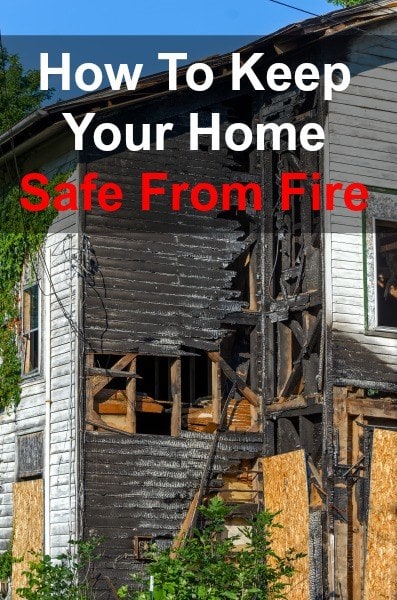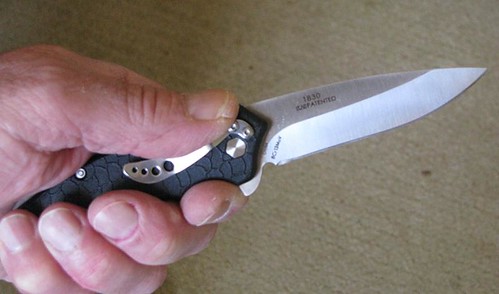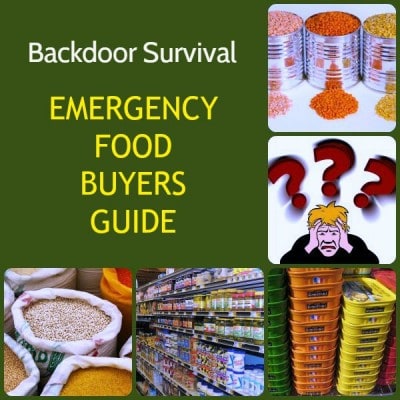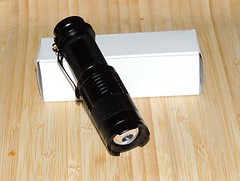

| Online: | |
| Visits: | |
| Stories: |

| Story Views | |
| Now: | |
| Last Hour: | |
| Last 24 Hours: | |
| Total: | |
Beyond SHTF: How to Keep Your Home Safe From Fire

A couple of weeks ago one of my blogging colleagues lost everything she owned in a house fire. Fortunately, the entire family, including the family pets, got out safely but everything they owned was gone.
Can you imagine this happening to you? In a flash, you could potentially be homeless and have to deal with temporary shelter in a hotel or with family members as you sort through the rubble of your burnt out belongings.
And what about your preps? Food storage, survival gear, and your precious print library of survival books would be gone.

I am not just referring to house fires. Disasters of all types can and do occur. Whereas many preppers are laser-focused on being ready for more epic disruptive events such as a pandemic, cyber-attack, or economic collapse, the reality is that a flood, tornado, hurricane, wildfire, earthquake or house fire are risks we live with on a daily basis.
Additional Reading : Disasters 101: A List for Those That Think It Will Never Happen
The focus today is on preventative measures you can take to keep your home as safe as you can from common disasters, and especially house fires. I am going to break things down two ways: first by the potential hazard and second by the specific living area in your home. Fair warning: there are some redundancies.
Read through these lists then take the time to walk through your home, condo, or apartment to ensure you have done everything you can to make your home safe. I promise it will only take about thirty minutes and the results just might save your home and your life.
Home Safety Checklist by Hazard
Check for electrical hazards
Look for and replace frayed or cracked extension and appliance cords, loose prongs and plugs.
Make sure there is only one plug per outlet. Avoid using cube-taps or overloading outlets.
Make sure your extension cords are rated for the electrical load and are no longer than what is realistically needed.
Remove electrical cords that run under rugs or over nails, heaters, or pipes.
Cover exposed outlets and wiring.
Repair or replace appliances that overheat, short out, smoke or spark.
Check for chemical hazards
Store flammable liquids such as gasoline, acetone, benzene, and lacquer thinner in approved safety cans, away from the living area of your home.
Place containers in a well-ventilated area and close the lids tightly. Secure the containers to prevent spills.
Move materials away from heat sources, open flames, gas appliances, and children.
Keep combustible liquids such as paint thinner, kerosene, charcoal lighter fluid, and turpentine away from heat sources.
Store oily waste and polishing rags in covered metal cans.
Instruct family members not to use gasoline, benzene, or other flammable fluids for starting fires or cleaning indoors.
Store weed killers, pesticides and flammable products away from heat sources.
Check for fire hazards
Clear out old rags, papers, mattresses, broken furniture and other combustible materials.
Move clothes, curtains, rags, and paper goods away from electrical equipment, gas appliances or flammable materials.
Remove dried grass cuttings, tree trimmings and weeds from the property.
Clean and repair chimneys, flue pipes, vent connectors, and gas vents.
Keep heaters and candles away from curtains and furniture.
Place portable heaters on a level surface, away from high traffic areas. Purchase portable heaters that are equipped with automatic shut-off switches and avoid the use of extension cords.
Check fire safety equipment
Install at least one smoke detector on each level of the home, especially near the bedrooms. Test every month and change batteries at least once a year.
Keep at least one fire extinguisher on each level of your home. Maintain and recharge them according to the manufacturer’s instructions. Show all family members where the fire extinguishers are kept and how to use them.
Check items that can shift or fall
Anchor water heater, large appliances, bookcases, tall or heavy furniture, shelves, mirrors and pictures to wall studs.
Fit water heater with a flexible gas supply line.
Place large or heavy objects on lower shelves.
Install clips, latches or other locking devices on cabinet doors.
Provide strong support and flexible connections on gas appliances.
Brace overhead light fixtures.
Hang heavy items such as pictures and mirrors away from beds and places where people sit.
Repair any deep cracks in ceilings or foundations.
Check your utilities
Locate the main electric fuse or circuit breaker box, water service shut-off and natural gas main shut-off.
Contact local utility companies for instructions on how to turn off the utilities. Teach family members when and how to turn off utilities.
Clear area around shut-off switches for easy access.
Attach a shut-off wrench or specialty tool to a pipe or other location close by the gas and water shut-off valves.
Paint shut-off valves with white or fluorescent paint to increase their visibility.
Check for Home Safety
Plan how to escape from your home in the event of an emergency.
Identify at least two exits from each room.
Clear doors, hallways and stairs of obstructions.
Conduct emergency drills. Practice day and nighttime escapes, and pick a safe meeting place outside the home.
Home Safety Checklist by Living Area
Bedroom and Sleeping Area
Are heaters located away from furniture and bedding?
Are there two exits out of each room and are the exits easy to navigate?
Is a phone nearby so that you can call 9-1-1? Does everyone know how to properly use 9-1-1-? (And yes, there is a proper way.
Additional Reading: A Primer on Using 9-1-1 for Emergencies.
Are smoke alarms mounted high, near doors and away from corners?
Do your sleeping areas include a carbon monoxide detector placed a distance away from any fuel-burning devices?
Do you sleep with the bedroom doors closed? Fire can’t travel when the route is blocked. Closed doors can contain the fire and give you more time.
Do you have sturdy shoes and a flashlight under your bed so that you can easily get through debris if there is an earthquake or other disaster in the middle of the night?
Are your room exits blocked by heavy furniture making a quick escape impossible?
Kitchen and Cooking Areas
Is the stove area clear? Pot holders and paper towels should be kept far away from the stove. Don’t keep your fire extinguisher above or behind the stove, as you won’t be able to reach it through the flames.
Does normal cooking trigger your smoke alarm? If it goes off frequently while cooking, improve ventilation, or move it further from the stove; don’t disable or start ignoring the alarm!
Living Areas
Are heaters placed far from furniture, throws, or curtains?
Are electrical cords away from rugs, rocking chairs, curtains, and not through doorways?
Do you use flameless candles? (You should.) If not, are your candles in safe, free-standing spots away from pets, children, or wind?
Garage and Storage Areas
Are flammable items kept away from dryer tops, or from around the base of any appliances with a pilot light, such as a water heater?
Is the area around electrical panels clear?
Are household chemicals stored out of the reach of children, and in a way that won’t allow them to accidently fall and mix together?
Is the water heater raised above likely flooding, and braced against the wall?
Are there old and dirty rags and flammable paints and chemicals close to heat sources including the furnace?
Emergency Exits (All Living Areas)
Are all emergency exits clear?
Is there flammable material in the vicinity of exits that can easily block the way out if it catches fire?
Don’t Take Home Safety for Granted
You are not quite done with me yet. I have found when taking to people that household safety is is taken for granted. A roof over your head, heat in winter, cooling in summer, and you are all set.
Until something bad happens. It may not happen to you but to a neighbor, family member, or someone you work with. Having said that, here are three more questions to ask yourself:
1. Does everyone in the household have knowledge of and know how to implement the family back-up community plan?
2. Do all household members know how to turn off the utilities (gas, electricity and water)?
3. When is the last time you have rehearsed your household escape routes and plans?
12 Things To Do In the Event of a Fire
I started this article mentioning a home fire that destroyed everything belonging to one of my online colleagues. Although you may have done everything you can to mitigate the chance of a home fire, stuff does happen. I would like to leave you with one more list; this time a plan of action that outlines what to do if there is a fire start in your home.
1. If a fire starts, alert others and get out of the building. This includes your pets. A fire can easily travel through a house in less than five minutes.
2. On your way out the door, grab your Bug-Out-Bag that is stocked with flashlights, emergency blankets, copies of your important documents on a flash drive and prescription meds.
3. Only fight a fire if the fire is small, you know how to use a fire extinguisher, and your way out will not be blocked if the fire gets too big.
Additional Reading: Downloadable Fact Sheet on How to Choose a Fire Extinguisher
4. If you’re primary escape route is filled with smoke, use your second way out. If you must escape through the smoke, stay low under the smoke and crawl quickly to safety, keeping your mouth and nose covered.
5. If you can, CLOSE the door of the room where the fire is. A flash fire develops quickly and that is what spreads the fire throughout the house by fanning out across the ceiling in the ENTIRE house. There are no guarantees but closing the door may prevent the fire from spreading.
6. Once outside, stay outside. Do not go back into a building that is on fire, even if you think the fire is still small. Aside from the obvious danger, do not count on having adequate vision to see. If you don’t believe it, try crawling out of your bedroom in the dark, with your eyes closed and a pillowcase over your head.
7. Go to the designated outside meeting place where everyone can be accounted for.
9. Call 9-1-1 to get help after you are safely out of harms way.
10. If you cannot get out, stay in a room as far away from the fire as possible. Keep the door closed and do your best to protect yourself in place. The more barriers and space you put between the fire and you, the greater your chance of survival. Report your location when you call 9-1-1 or by signaling to the firefighters through the window.
11. If your clothes catch on fire, stop, drop and roll. Stop where you are, drop to the ground, and roll until the fire is out. Cool the burned skin with water, if available, and seek medical attention.
12. For insurance purposes, do a home inventory now because it is easy to forget what you own. Also, you will discover everything is worth way more than you thought.
The Final Word
Is this sexy, glamorous, prepper stuff? Nope. Is it necessary? Absolutely.
If you are truly a prepper and want to be ready for anything, you will ensure that your home is as safe as it can be. You want clothes to wear, food to eat, and a bed to sleep in. And of course, you want your preps to be there for you if and when the stuff his the fan.
It is common sense, really.
Enjoy your next adventure through common sense and thoughtful preparation!
Gaye
If you enjoyed this article, consider subscribing to email updates. When you do, you will receive a free, downloadable copy of my e-Book, The Emergency Food Buyer’s Guide.
You can also vote for Backdoor Survival daily at Top Prepper Websites!
Bargain Bin: Below you will find links to the items related to today’s article.
Emergency Mylar Thermal Blankets (Pack of 10): I do believe in helping my neighbors in the community so a supply of these will be handy to hand out to those in need. You will be surprised at how warm these will keep you. Be sure to test one out in advance so that you have the confidence to trust the blanket in an emergency. About $7 for 10.
UltraFire Mini Cree LED Flashlight: I personally keep flashlights in every single room of my house and you should too. Consider ordering a dozen of these Mini-Crees so you have one for each room. At the time of this writing, these flashlights are $3.20 with free shipping. Or you can purchase 4 for $13.99. These favorites are super mini sized, bright and waterproof. Plus, they use a single, standard AA sized battery.
BYB Light TML-T6: This flashlight is extremely bright, casts wide angle and, when zoomed, a very focused beam. I swear that if there were a rattlesnake out in the desert outside my back yard this flashlight would find it. It’s a sturdy thing with an aluminum casing that is not at all heavy. It has 5 built in modes including the standard high, medium, low plus a strobe and SOS mode. It includes a rechargeable battery and a charger plus an adapter to hold AAA batteries.
Just to see it stacks up with my other favorites, here is a photo showing the differences in size and form factor.
Emergency Gas and Water Shutoff 4-in-1 Tool for Earthquakes, Hurricanes, Fires, Floods, Disasters and Emergencies: The price has really come down on these 4 and 1 emergency tools. Now about $12.
Timberland Boots: A reader recently sent me an email asking for a recommendation for a “good set of boots”. All I could do is respond by saying that my two pairs of Timberland boots are over 15 years old and they are still going strong. They have been through mud, water, guck – and more. They are still waterproof and still comfortable. Sometimes I wish they would wear out so I could get some new ones!
First Alert Tundra Fire Extinguisher Aerosol Spray Twin Pack: Consider placing one of these aerosol fire extinguishers within easy reach of every bed in your home. These are effective one on fires including paper, wood, fabric, cooking oil and electrical fires. In addition, they sprays 4X longer than regular fire extinguishers. Keep one near the barbeque, plus in the kitchen, garage, and each bedroom. You will love the form factor.
Kidde FA110 Multi Purpose Fire Extinguisher: This multipurpose fire extinguisher is UL rated 1-A:10-B:C, and it is designed to fight basic fires common to the home, including those involving fabrics, plastics, wood, flammable liquids, and electrical equipment. It is fitted with an easy-to-read pressure gauge that tells you the fire extinguisher is charged. A clear instruction label clearly shows the steps required to operate the extinguisher. As if this writing, this is the #1 best selling fire extinguisher on Amazon.
Kidde Nighthawk Combination Carbon Monoxide, Fire, and Smoke Intelligent Alarm: Offering breakthrough technology to provide maximum protection for your family, the Kidde KN-COSM-XTR-B intelligent alarm combines fire, smoke, and carbon monoxide (CO) alarms into a single device. And more than just beeping alerts, the KN-COSM-XTR-B provides voice warnings that clearly state the present danger– announcing either “Fire! Fire!” “Warning! Carbon Monoxide!”

Kershaw OSO Sweet Knife: This “oh so sweet” knife is a solidly built, stainless steel knife that comes razor sharp right out of the package. It will pretty much cut through anything the price is amazing. Currently about $16; normally about $25.
~~~~~~~~~~
Shop the Emergency Essentials Daily & Monthly Sales for Fantastic Deals!
For over 25 years Emergency Essentials has been providing the highest quality preparedness products at great prices. Plus, each month they feature sales that quite honestly are fantastic.

Emergency Essentials carries a wide variety of equipment and supplies – all at competitive prices.
~~~~~
Need something from Amazon (and who doesn’t)?
I earn a small commission from purchases made when you begin your Amazon shopping experience here. You still get great Amazon service and the price is the same, no matter what.
Amazon has a feature called Shop Amazon – Most Wished For Items. This is an easy tool for finding products that people are “wishing” for and in this way you know what the top products are. All you need to do is select the category from the left hand side of the screen.
The Amazon Top Most Wished For Emergency and Survival Kit Items
Emergency Preparedness Items from Amazon.com
Bug Out Bag – Get Home Bag Supplies
Amazon Gift Cards
Help support Backdoor Survival. Purchases earn a small commission and for that I thank you!
~~~~~
Are You Interested in Essential Oils?
20 All Purpose Remedies Using Essential Oils
The post Beyond SHTF: How to Keep Your Home Safe From Fire by Gaye Levy first appeared on Backdoor Survival.
Source: http://www.backdoorsurvival.com/how-to-keep-your-home-safe-from-fire/







